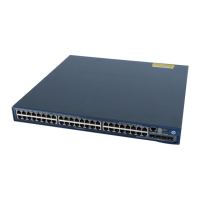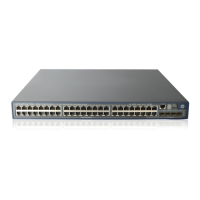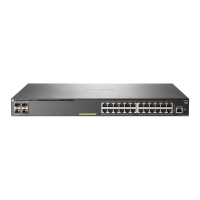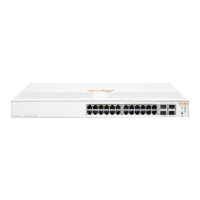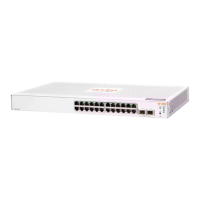54
Plan the installation site and IRF fabric setup parameters:
Planning IRF fabric size and the installation site
Identifying the master switch and planning IRF member IDs
Planning IRF topology and connections
Identifying physical IRF ports on the member switches
Planning the cabling scheme
2. Install IRF member
switches
See ―Confirming installation preparations
Before you install the switch, make sure:
You have read ―Preparing for installation‖ carefully
and the installation site meets all the requirements.
A 19-inch rack is ready for use. For how to install a
rack, see the rack installation guide.
Installing the switch in a 19-inch rack‖ or ―Mounting the switch on a
workbench.‖
3. Connect ground wires
and power cords
See ―Grounding the switch‖ and ―Connecting the power cord.‖
5. Configure basic IRF
settings
See HP A5820X & A5800 Switch Series IRF Configuration Guide.
6. Connect the physical
IRF ports
Connect physical IRF ports on switches. Use SFP+ transceiver modules and
fibers to connect 10-Gigabit SFP+ ports over a long distance, or use SFP+
cables to connect 10-Gigabit SFP+ ports over a short distance.
All switches except the master switch automatically reboot, and the IRF fabric
is established.
Planning IRF fabric setup
Planning IRF fabric size and the installation site
Choose switch models and identify the number of required IRF member switches, depending on the user
density and upstream bandwidth requirements. The switching capacity of an IRF fabric equals the total
switching capacities of all member switches.
Plan the installation site depending on your network solution, as follows:
Place all IRF member switches in one rack for centralized high-density access.
Distribute the IRF member switches in different racks to implement the ToR access solution for a data
center.
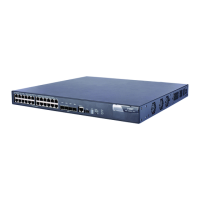
